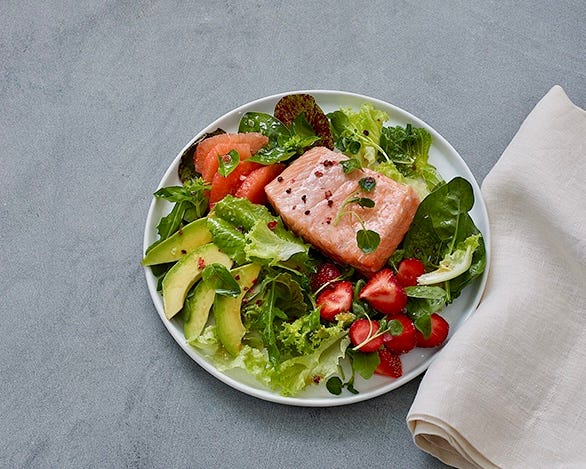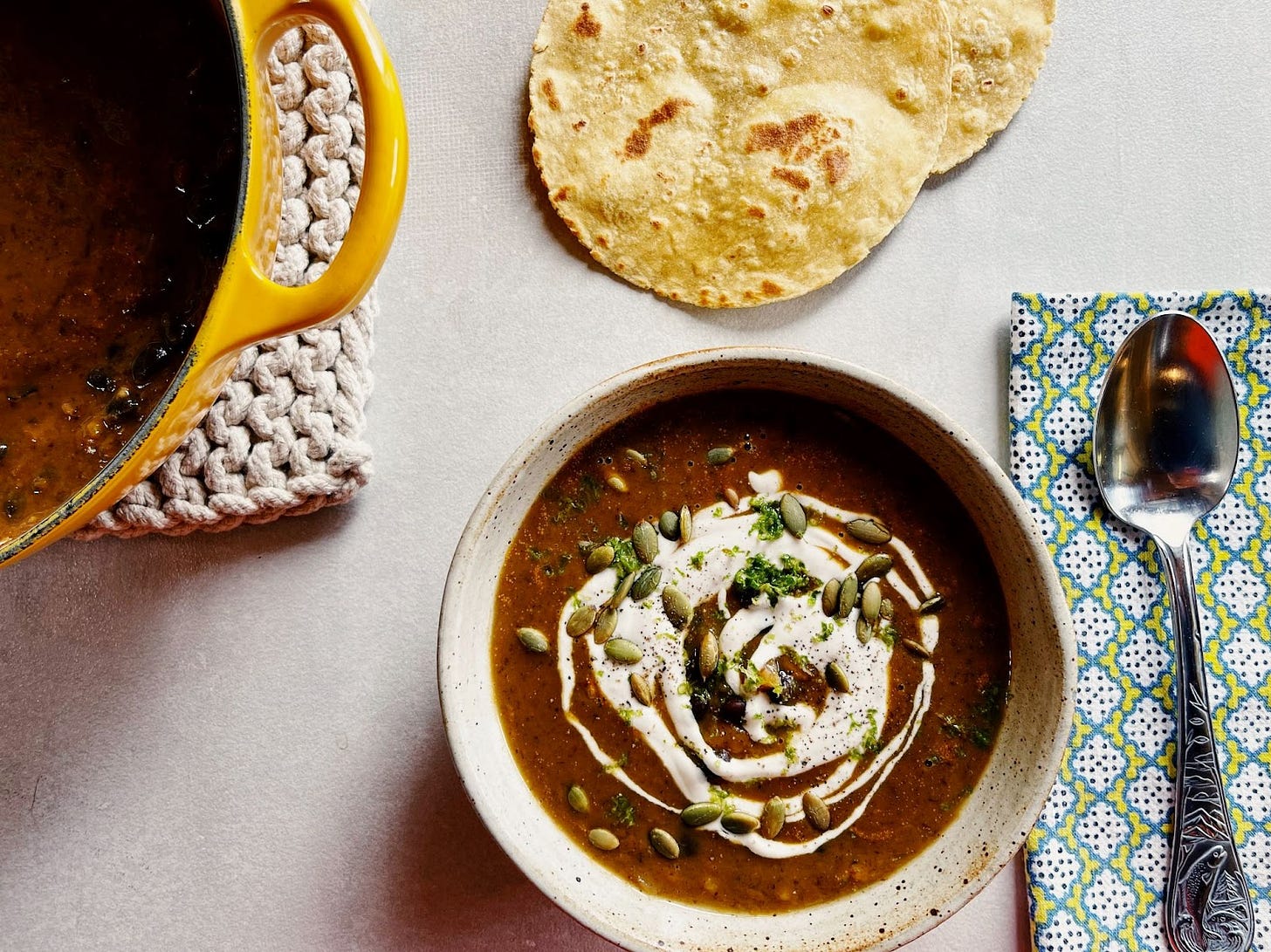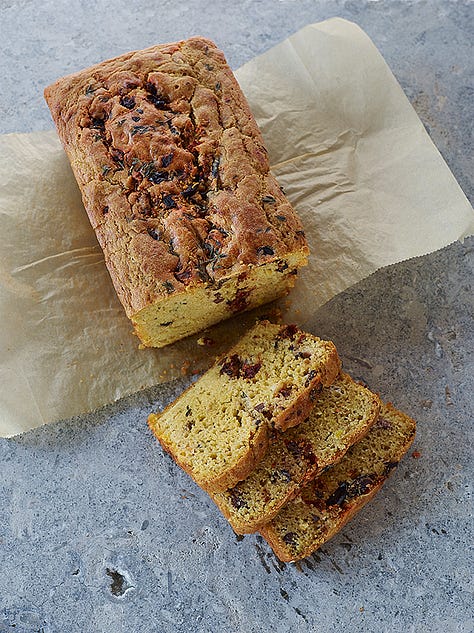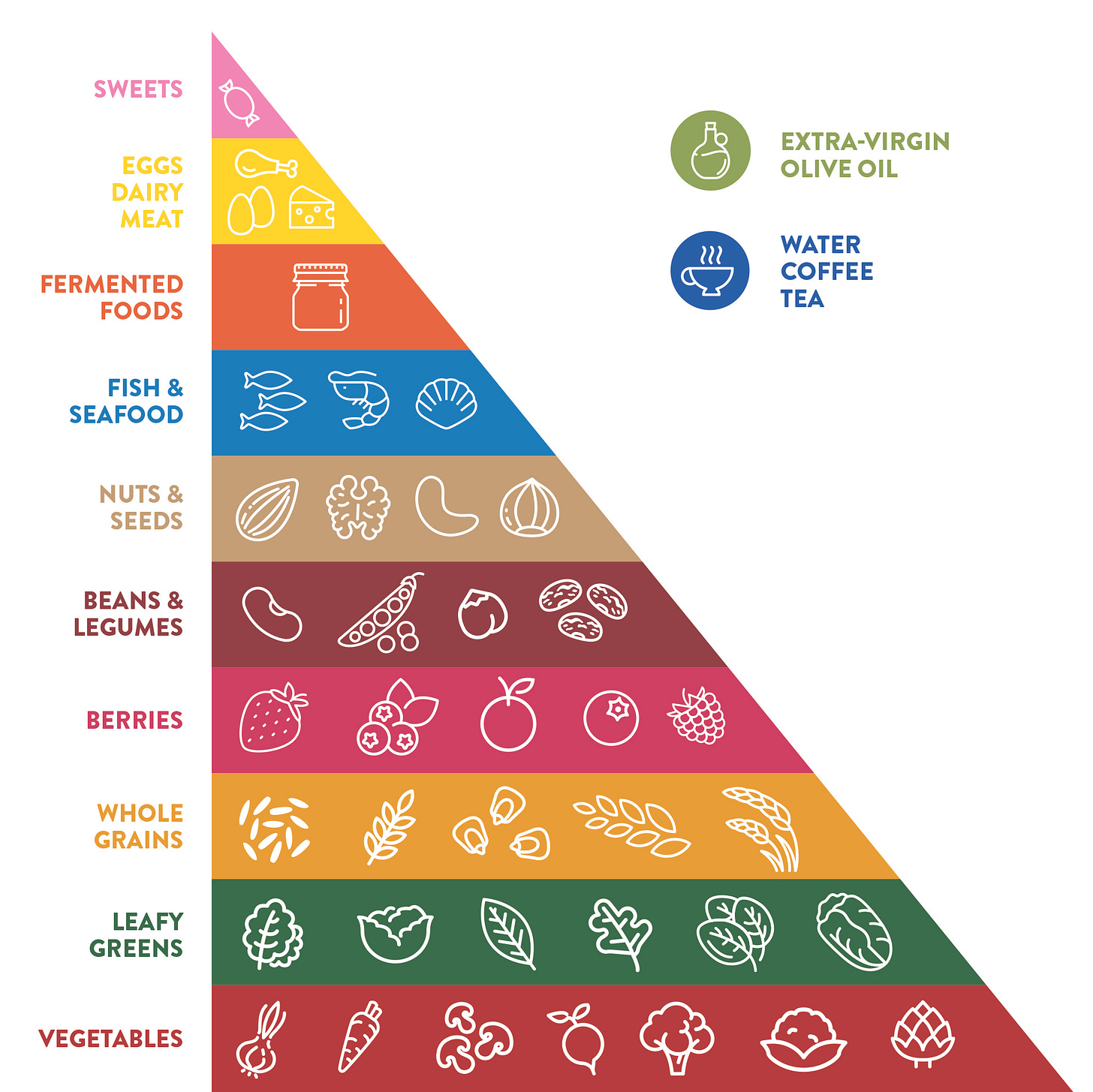Your 10 Most FAQs About Brain Healthy Food, Answered.
Plus, what’s the scoop on erythritol? And, our March Cookbook Club Menu.

Hello, everyone. It’s March at last. Perhaps you, like me, are basking in those extra few minutes of sunlight each day. Longer days mean your brain gets to reset its circadian clock—in a good way. Before we get into today’s topics, I’d like to take a moment to thank you for being here. The BHK newsletter now has over 10,000 subscribers! It’s crazy how much we have grown.
I don’t think of you as subscribers, of course. You are Brain Health Ambassadors! Not only are you prioritizing your own brain health, you are out there sharing what you learn with others. So, please accept my heartfelt gratitude for being a part of this community. Whether you pop in monthly for the free newsletter, follow along on Tuesdays and Fridays as a paid subscriber, or have opted to be part of my inner circle as a Founding Member, I am happy you are here. Each of you is critical to my mission: spreading the word on how to reduce the risk of cognitive decline, while eating delicious food.
I’d love to hear from you. What would you like to see more of in the BHK newsletter? Would you like more journal club articles (easily digestible summaries of the latest brain health studies), open thread discussions (I really enjoyed our first one about favorite books), or explainer-type articles about brain health science? Everyone always wants more recipes! But would you prefer more off-the-cuff recipes, full meals, or ideas for plant-based eating? I sometimes give you Brain Health Homework and downloadable Definitive Brain Health Guides to products. Would you like to see more of these?
Everyone is welcome to leave a comment below. To celebrate our 10K community, I’ll randomly choose 3 commenters to receive annual BHK subscriptions. Use it to upgrade your free subscription, extend your paid one, or gift it to someone you love.
Your 10 Most Frequently Asked Questions About Brain-Healthy Food

I’ve heard that bread is bad for the brain, especially gluten. But I love bread! Is it really that bad for me? Good quality bread can certainly be a part of your brain-healthy diet. Whole grains are one of the top food groups for Alzheimer’s prevention. While you may read that grains are inflammatory, scientific studies show the opposite: consuming whole grains drives down inflammatory markers in the body. And gluten is only a problem if you have celiac disease, a wheat allergy, or a gluten sensitivity (about 4% of the population). So how do you tell if your store-bought bread is whole grain? There’s a simple trick (based on a Harvard School of Public Health study): Zero in on the nutrition label and find the number of carbohydrates. Divide that number by 10. Find the number of grams of fiber. Compare: the total number of carbs/10 should be less than the number of fiber grams.
The MIND diet and your BHK Food Guidelines recommend 3 servings of whole grains each day. How do you do that, practically? While this seems like a lot of grains, the serving size is small: ½ cup cooked. In a typical day, this could mean having a slice of whole grain toast (see #1) or a small bowl of oatmeal at breakfast, a scoop of brown rice or farro in your soup or salad at lunch, and a small serving of quinoa or bulgur along with your salmon at dinner. When baking, augment your whole grain intake with nutrient dense flours like buckwheat, white whole wheat, whole wheat, and quinoa.
I really enjoy eating eggs but I’m worried about getting too much cholesterol. Are eggs part of a brain-healthy diet? Yes, they can be, but it depends. This is where it’s important to individualize your diet based on your personal health status. Eggs provide a whole host of brain health nutrients (choline, lutein, B vitamins, omega-3 fats), along with a good dose of protein. Dietary cholesterol from eggs does not raise blood cholesterol in most people. (Saturated fat in the diet is what makes harmful LDL go up, an important risk factor for Alzheimer’s). The current American Heart Association recommendation says healthy people can eat up to 7 eggs per week. Others, such as vegetarians and older adults (who may need more protein) with normal cholesterol levels can eat up to 2 eggs a day. But around 15% of so-called “hyperresonders” do need to be careful about dietary cholesterol. If you’ve had difficulty getting your LDL cholesterol down or are living with diabetes or heart disease, consider taking a break from eating eggs to see how your blood cholesterol responds.
I’m cutting back on dairy products in favor of nut- and plant-based foods. How can I be sure I am getting enough calcium to maintain healthy bones? If you grew up hearing that you need to drink cow’s milk to build strong bones, it can be tough to give it up. A cup of milk gives about 300 mg of calcium, which is 25% of your daily calcium requirement. (Your body needs anywhere between 1000-1200 mg of calcium every day, more if you are postmenopausal, pregnant, or lactating). Milk definitely provides calcium to the body but you will be surprised to know how many other foods provide even more calcium than a cup of cow’s milk: tofu (1 cup, cubed = 830 mg), almonds (1 cup = 385 mg), yogurt (1 cup, dairy or plant-based = 488 mg), almond milk (1 cup = 449 mg), oat milk (1 cup = 350 mg), soy milk (1 cup = 350 mg), sesame seeds (¼ cup = 350 mg), tahini (¼ cup = 256 mg), chia seeds (¼ cup = 715 mg), chickpeas (1 cup = 210 mg), edamame (1 cup = 200 mg), sardines with bones (3 small = 350 mg), and a generous serving of these vegetables: broccoli, kale, Brussels sprouts, bok choy, spinach, and collard greens (1 cup cooked = 200 to 350 mg).
I know fish and seafood is an important brain health food group, but I don’t eat fish at all. Are there any holes in my diet I should address? Yes! Fish and seafood provide two omega-3 fats that are crucial for brain health: DHA and EPA. Your brain needs these fats to repair brain cell membranes, block oxidative stress, and grow new neurons. You can get some DHA and EPA indirectly from plant foods, but it needs to be converted in the body, an inefficient process that yields less than 5%. Non-fish eaters should consider taking a supplement that contains DHA and EPA in a 3:1 ratio. Fish-derived sources (like fish oil) have the best data to say they cross the blood brain barrier effectively, but vegans can choose algae-based supplements instead.
I’ve been cutting back on alcohol and drinking spirit-free mocktails instead. But so many of these drinks are loaded with sugar. What's the secret to making a great mocktail that’s low in sugar too? Start with nutrient-dense ingredients that bring a lot of flavor. Strongly brewed tea, for example, can add sweetness without sugar. (I like using elderberry tea in the Cuzco Sour I wrote about here, and cinnamon spiced tea in this Spiced Apple Mocktail.) Monkfruit simple syrup can replace simple syrup made from sugar to sweeten drinks, too. I shared a recipe for that here.
But monk fruit sweetener is often mixed with erythritol, which I just read causes heart attacks. Should I give it up? Monk fruit is a natural non-nutritive sweetener. Erythritol is a sugar alcohol commonly used as a sugar substitute in diabetic and keto-friendly food. They are often combined in monk fruit products to achieve the texture of granulated sugar. Both have been generally considered safe to consume and don’t spike blood sugar and insulin like sugar does. A study out this week in the journal Nature Medicine, however, now links erythritol consumption to increased heart attack risk. While this study set off alarming headlines, upon closer examination it raises more questions than answers. For example, the sample size was small, the dose of erythritol was high (like eating an entire pint of keto ice cream), and the blood clotting data was done on mice. So, as of now, it is still considered perfectly safe to consume small amounts of monk fruit/erythritol sweetener, as you would in making a mocktail. Exercise caution, however, if you have had a heart attack or are at high risk for one when eating foods made with high doses of erythritol. These erythritol-heavy foods are mostly processed foods that you want to avoid anyway in a brain healthy diet. You can find monk fruit sweetener without added erythritol, too. And, in case you were wondering, I didn’t include these sweeteners in the book. While I’m fine with occasional use in recipes, I am waiting for the science to evolve.
I really like cooking with coconut oil, but I know you prefer other oils. Is coconut oil off the table for a brain-healthy diet? Coconut oil is confusing for people because it’s marketed as a brain food even though there’s no data to prove this. It’s too high in saturated fat (94%) to be a brain healthy dietary staple. So, while I recommend extra-virgin olive oil as your primary cooking oil, and avocado or nut oil for high heat cooking, coconut oil can be enjoyed in small doses to add its unique flavor to certain foods, like stir-fries and the Turmeric and Black Pepper Granola in my book. If you are struggling with high cholesterol, though, be aware that daily coconut oil consumption can raise LDL by 9%, a significant amount.
In your book, the BHK food pyramid includes a daily serving of fermented food. Does yogurt count? Yes, a good-quality plain yogurt (that’s also unsweetened) is an excellent source of gut-friendly microbes, the kind you get from fermented food and shown to jumpstart cultivating a diverse gut microbiome. Choose whatever type of yogurt you like: cow, sheep or goat milk; cashew or almond; or soy. One cup per day also provides about 25% of the body’s calcium requirement. (See #4.) Choose “Greek-style” yogurt for a good dose of protein, too. Try kefir in a smoothie or salad dressing for the most potent source of these microbes.
I just can’t eat beans without getting a lot of intestinal bloating. Yet I know it’s an important brain food group. Help! Most people can digest beans and legumes just fine, but they don’t possess the gut microbes needed to do so comfortably. The fix: keep introducing small quantities of beans into your diet to get your gut in shape. Make sure your beans are well cooked, and start with the ones that are most easily digested: black beans, cannellini beans, and red lentils. Keep at it and slowly work up to the 3 servings per week (½ cup cooked) recommended. And remember, soy foods are legumes, too: edamame, tofu, tempeh, miso, and soy milk.
March Cookbook Club: Cook the Cover



March happens to be the month when winter citrus and early spring berries coincide. So let’s cook the cover: this beautiful Strawberry Avocado Salad with Salmon Basil and Lime on page 59. I know you will want to spin off the easy grapefruit and lime dressing for many lightened-up spring meals to come. For this dish, I invite you to tap into your inner food stylist and have fun plating all these gorgeous brain healthy ingredients. The food stylists for the book, Cyd McDowell and Christine Buckley, along with stellar photographer Alexandra Grablewski, really outdid themselves to get the perfect cover shot.
March Cookbook Club Menu
Strawberry Avocado Salad with Salmon, Basil, and Lime
Savory Olive Quick Bread with Tomatoes and Thyme
Chewy Chai-Spiced Chickpea Cookies
To go alongside, this recipe gem from the Olives and Olive Oil Chapter is perfect for now: Savory Olive Quick Bread with Tomatoes and Thyme on page 327. It’s a warm savory loaf that comes out of the oven smelling like pizza.
For dessert, let’s make the Chewy Chai-Spiced Chickpea Cookies on page 240. In the book, I describe these as a cross between a warming chai latte and a soft spice cookie. That sounds about right to welcome the fickle month of March! I can’t wait to see all your photos! Be sure to email them to me or tag me on Instagram.
In case you missed it, last month I launched the BHK Cookbook Club as a way for us to share a monthly seasonal menu from The Brain Health Kitchen: Preventing Alzheimer’s Through Food. Learn more about how it works here.
Book Tour News
Next week I am headed to Dallas, Texas for a week of events to share The Brain Health Kitchen book. I’ll be speaking at the Cooper Clinic, the home of a friend, and at these two public venues: The Charleston House on March 6, and Interabang Books on March 8.

After a quick trip to Panama, I’m back to the book tour with Colorado stops at The Tattered Cover in Denver and The Boulder Bookstore.
For up-to date-information on book tour events, and to get tickets, go to this page on my website.
Brain Health Retreat Updates
The Panama Brain Health Retreat happens the end of March. I am really looking forward to seeing some of you there! (There’s one cabaña left; if you book, ask for the BHK subscriber discount.)
And yes, we are going to Italy! The Brain Health Retreat in Sicily is starting to fill up. If you have had your heart set on this one, now is the time to book. Contact Elizabeth Minchilli directly at the button below, and be sure to follow her newsletter and Instagram for all things Italian.
Finally, I’ll leave you with this article in Eating Well. When they reached out to me about the health benefits of coconut vs. avocado oil, I had a few things to say. Have a wonderful March, everyone! Paid subscribers, I’ll be back here on Tuesday with a new perspective on the Mediterranean diet. As always, thank you for reading and sharing.
Love,
Annie





Four shares:
1. I borrowed Andrew E. Budson's, "Why We Forget & How to Remember BETTER" book from my amazing local library system recently! Thanks so much for recommending it. Not the typical "aging brain" kind of book, but, one filled with actionable memory tips, & reassuring science on how we remember, & what changes as we age. A WINNER!
2. Just made your Cranberry Bean & Sausage Stew AGAIN--IT'S SO GOOD!! But THIS TIME, I instead of using a higher sat fat & sodium plant-based sausage I used Bilinski's Organic Spicy Italian Sausage! And I haven't eaten any poultry for 15 years. Low fat, low sat fat & DELICIOUS!
3. Since you're going to be in Colorado--check out a local source for the "new" non-meat, real food made from mushroom roots, called Meati. My son picked up a couple packages while in CO & we taste-tested the "beef" cutlet. Seriously, it tasted just like flank steak. It's a very unique product with none of the usual junk ingredients.
4. I use soy or almond milk for cooking, but when it comes to yogurt or kefir I'm all for the organic, low-fat or non-fat REAL DAIRY Greek yogurts or organic kefirs. The plant versions offer minimal calcium or protein. I just don't see the point of them nutritionally, except for the ethical vegan reasons. I'm lactose intolerant & fermented dairy doesn't cause me any GI distress that a glass of milk would. Just my opinion.
Thanks for all the info you share!
Here for ALL the brain health things, but really enjoy the recipes. Maybe some that are geared towards week nights, 30 min or less. Thank you for all you do!